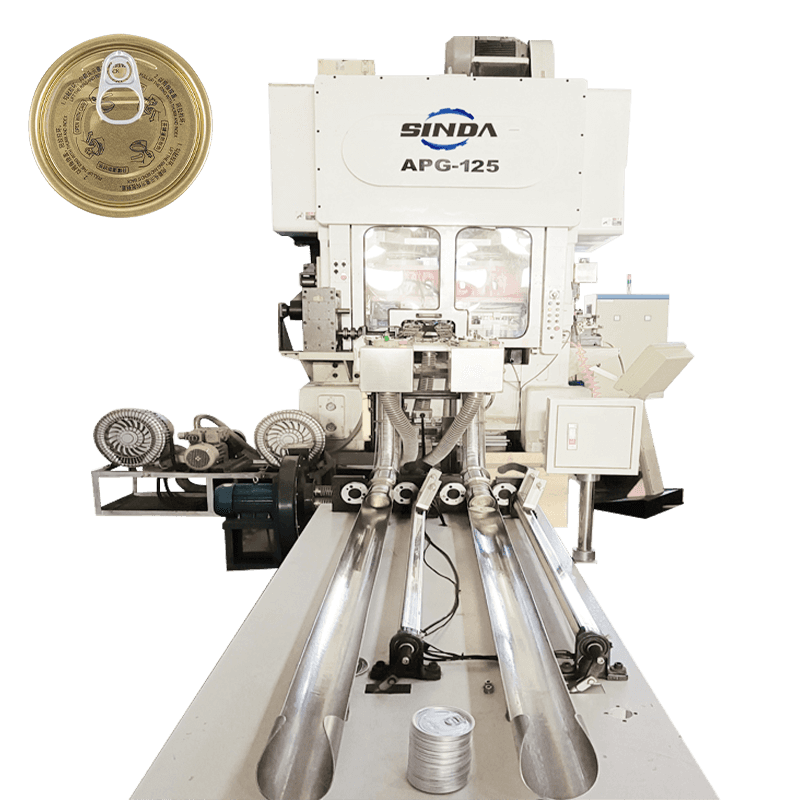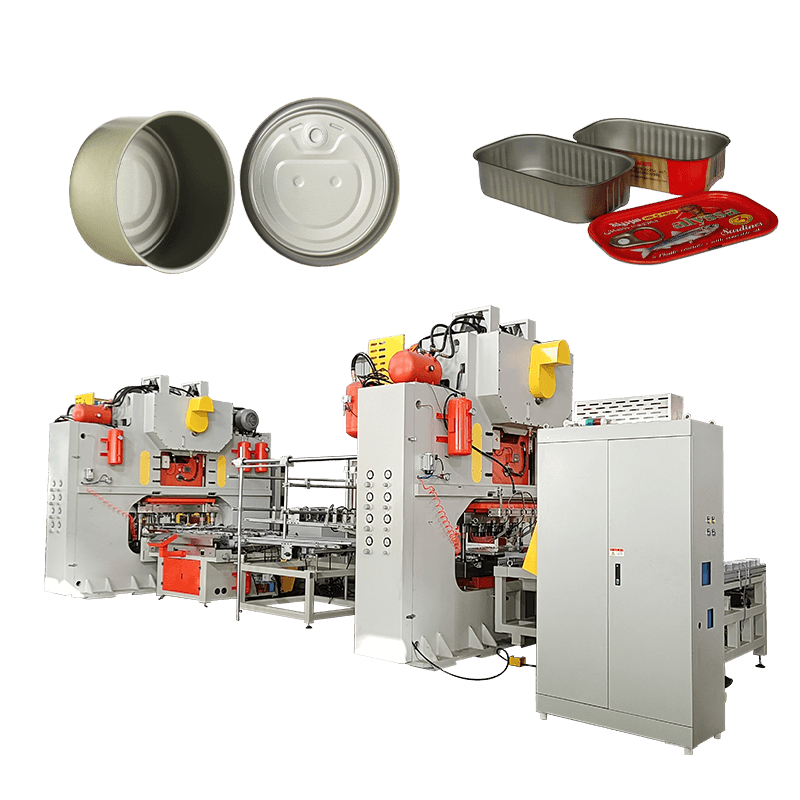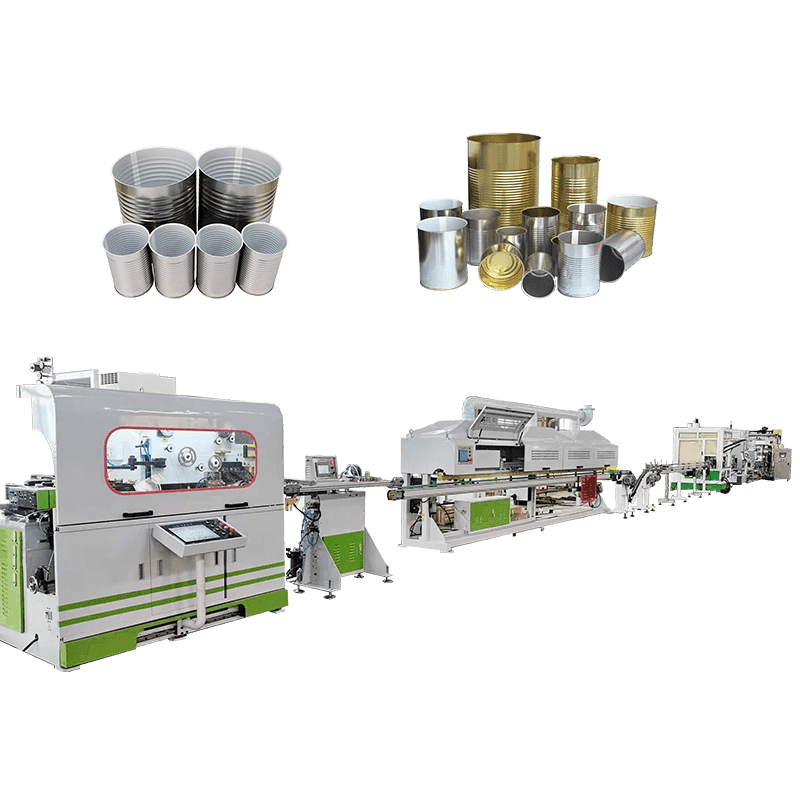Introduction to the 2-piece DRD Tank Production Line
The 2-piece DRD tank production line is widely applied in the packaging industry, particularly for food, beverages, and chemical products. It involves a deep drawing and redrawing process to manufacture cans from a single sheet of metal, eliminating the need for a separate bottom seam. While this technology brings efficiency and structural reliability, it also creates environmental challenges such as high energy consumption, waste generation, and emissions. Therefore, focusing on improvement measures for environmental protection within this production line has become an important concern for manufacturers aiming to achieve sustainable development.
Energy-Saving Technologies in Production
One major environmental consideration is energy use. The deep drawing and redrawing process consumes considerable electricity for press machines, lubrication systems, and heating processes. By upgrading to energy-efficient motors, adopting frequency converters, and improving press cycle optimization, the production line can reduce unnecessary energy waste. Additionally, integrating real-time energy monitoring systems helps manufacturers adjust parameters and avoid excessive consumption. Over time, these improvements contribute not only to environmental benefits but also to lower production costs.
Reduction of Raw Material Waste
During can forming, trimming and shaping may generate scrap materials. These scraps, often made of aluminum or tinplate, require proper recycling to avoid resource loss. Introducing advanced cutting technologies with higher precision reduces the proportion of off-cuts, while closed-loop recycling systems allow manufacturers to remelt and reuse these materials directly in production. Minimizing material waste not only conserves resources but also decreases the environmental footprint associated with primary metal extraction.
Optimization of Lubricant Use
Lubricants are essential for reducing friction during the deep drawing process, but excessive or improper lubricant use can cause contamination and wastewater issues. Environmentally friendly measures include adopting water-based lubricants, installing automatic dosage systems to prevent overuse, and implementing lubricant recycling units. These steps ensure effective lubrication while reducing chemical discharge.
Air Emission Control
The 2-piece DRD production line may generate volatile organic compounds (VOCs) from coatings and cleaning agents. To minimize air pollution, manufacturers can employ low-VOC or solvent-free coatings, install high-efficiency exhaust systems, and use activated carbon adsorption or thermal oxidation units for VOC treatment. These approaches lower the impact on surrounding air quality and comply with stricter environmental regulations.
Water Resource Management
The cleaning of cans before and after coating often requires large amounts of water, leading to potential wastewater discharge. Improvement measures include using closed-loop water circulation systems, filtration units, and advanced wastewater treatment technologies such as membrane separation or biological treatment. By reclaiming and reusing water, the production line reduces freshwater demand and limits wastewater pollution.
Noise and Vibration Reduction
Pressing and redrawing equipment can generate noise and vibrations, affecting both workers and nearby communities. Improvement measures include soundproof enclosures, vibration-absorbing materials, and regular maintenance of equipment. While this may seem less related to direct emissions, it forms an important part of environmental protection by reducing industrial noise pollution.
Application of Automation and Digitalization
Automation and digital control systems not only increase production efficiency but also reduce unnecessary environmental impacts. Real-time monitoring of energy, emissions, and resource use allows operators to identify inefficiencies quickly. Predictive maintenance reduces downtime and waste caused by sudden failures. Digital twin technologies can also simulate production processes to optimize material flow and energy allocation before actual operation.
Use of Environmentally Friendly Materials
Selecting recyclable or lighter gauge materials reduces the overall environmental burden of the 2-piece DRD can. For instance, reducing the wall thickness of the can while maintaining sufficient strength can lower raw material consumption. Furthermore, applying coatings with less hazardous content ensures safer production and disposal.
Employee Training and Awareness
Improvement measures should not only focus on equipment and technology but also on the workforce. Training employees on proper operation, waste segregation, and responsible use of resources ensures that environmental measures are implemented consistently. Awareness programs encourage employees to identify small yet impactful improvements in daily operations.
Regulatory Compliance and Standards
To ensure sustainability, manufacturers must comply with environmental regulations and industry standards. Certifications such as ISO 14001 provide frameworks for systematic environmental management. By adopting these standards, companies can ensure that their improvement measures are not only effective but also recognized by external authorities.
Comparative Table of Improvement Measures
The table below summarizes some improvement measures and their direct environmental benefits in the 2-piece DRD tank production line.
| Improvement Measure | Environmental Impact Mitigation | Additional Benefits |
|---|---|---|
| Energy-efficient motors & controls | Lower electricity consumption, reduced carbon emissions | Reduced operating costs |
| Advanced cutting precision | Less scrap generation, improved material utilization | Better production efficiency |
| Water-based lubricants | Reduced chemical waste and safer disposal | Improved workplace safety |
| VOC emission control systems | Lower air pollution and compliance with regulations | Enhanced community relations |
| Closed-loop water recycling | Reduced freshwater use and wastewater discharge | Lower water bills |
| Noise and vibration dampening | Reduced noise pollution, better working environment | Improved employee health |
| Digital monitoring systems | Real-time data on energy and emissions for optimization | Predictive maintenance benefits |
Challenges in Implementing Environmental Measures
Although the benefits are clear, implementing environmental protection improvements faces challenges such as high initial investment, technical complexity, and adaptation to existing production lines. For small or medium-sized manufacturers, financial limitations may delay upgrades. Therefore, gradual implementation strategies, government incentives, and industry collaborations can help overcome these obstacles.
Long-Term Benefits of Environmental Improvements
Environmental protection measures not only reduce ecological impacts but also provide long-term economic and reputational advantages. Energy and material savings lower operational costs, while compliance with regulations avoids penalties. Furthermore, eco-friendly production enhances brand reputation, which can attract environmentally conscious customers and business partners.

 English
English عربى
عربى русский
русский




